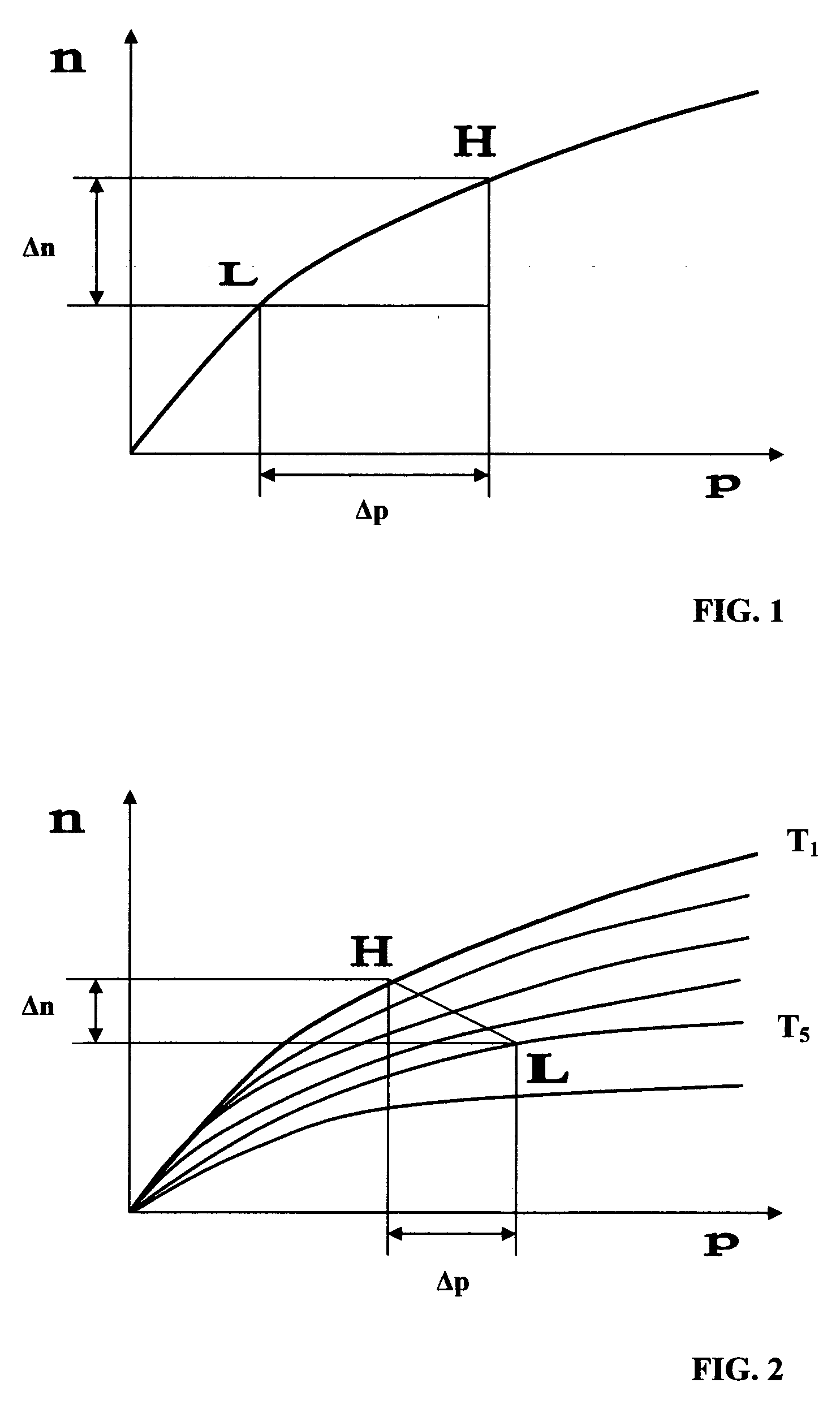[0043] Composites of the invention, when used as oxygen separation media, may be supported on (or serve as supports for) an “active” matrix selected from porous
inorganic materials that are stable at temperatures
ranging from about 500 to about 1000° C. In this form the inventive compositions may be referred to as supported composites. “Active”—as that term is used when referring to support or matrix materials—means that even the supporting material acts in the oxygen sorption and transport. Compounds of general formula M′On′ may be supported by the composites of the invention. Compounds within the general formula M′On, referred to as “binary
metal oxides”, mean a single
metal element that assumes different oxidation states within the oxygen
partial pressure range of the CAR process, enabling the metal oxides to release oxygen at different partial pressures of oxygen in CAR processes. In the binary metal oxides, M′On, M′ is a metal of the d block transition metals that changes its
oxidation state. Metals may be Cu, Co, Ni, Bi, Pb, V, Mn, and Cr, the oxides of which release oxygen by changing their
crystal phase or by their reduction up to the metal. In their pure states, the binary metal oxides do not form stable
ceramic shapes because of crystal phase transformations. However, in combination with an
active support or matrix
oxide (perovskite materials within general formulas (1), (2), or (3), perovskite-like materials within general formulas (4), (5), (6), (7), (8), and (9), and pyrochlores within general formula (10)), stability of the binary metal oxides can be enhanced, while extending the oxygen sorption /
desorption capacities of the matrix compositions. Other suitable
active support materials include
apatite compositions.
[0048] Thus, the present invention provides for novel materials and methods of use, specifically modified mixed ionic-electronic conductor (MIEC) materials (either alone or as composites with
active oxygen exchange
support materials) with enhanced performance in sorption, catalytic processes, and the like. The inventive composites owe their ionic and electronic conductivities, particularly their oxide-
ion mobility and O2-storing capacities, to high-temperature non-stoichiometric defects such as oxide-ion vacancies—or interstitial oxygen sites—in the crystal-lattice structure of the solids, and also on changed valence states of a selected series of transition metals, which lead to different oxides of one and the same metal. These materials will have strong potential for high-temperature processes that utilize the O2-storing / releasing properties for purposes of the enrichment of O2 in gas streams but also for multi-fold catalytic transformations of other compounds. The inventive composites may also be formed into chemically and mechanically robust
ceramic composites such as
sorbent and membrane materials with high O2 capacities (in the case of adsorbents) and high O2
permeation fluxes (in the case of membranes). This enables the design of high-performance structured ceramics of regular or random shapes, allowing for high performance in O2 enrichment and, at the same time, the ability to withstand the expected operating conditions in large scale plants, and be cost-effective in addition. The inventive composites may be utilized advantageously for high-temperature CAR-type PVSA and TSA processes (and also for other related applications) to produce substantially pure O2,
syngas and H2 (at small and large scale), as well as O2 and fuel in integrated process schemes, for example, so-called oxy-fuel processes and many other processes.
 Login to View More
Login to View More  Login to View More
Login to View More 


